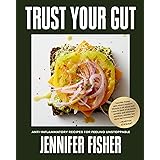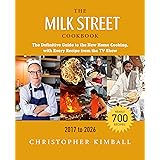The culinary world is continuously evolving, and the art of crafting plant-based delicacies has reached new heights. If you just watched the accompanying video, you witnessed the intricate yet rewarding process of creating homemade vegan Cashew Camembert. This guide delves deeper into the nuances of making this sophisticated dairy-free cheese, expanding on the steps shown in the video and providing additional insights to ensure your success. Embracing the journey of making your own vegan Cashew Camembert offers unparalleled satisfaction, delivering a truly artisanal product that rivals its dairy counterpart in flavor and texture.
Understanding the Fundamentals of Vegan Cashew Camembert
Creating vegan Cashew Camembert is not merely about combining ingredients; it’s a patient process of fermentation and aging that transforms simple nuts into a complex, rind-molded cheese. This dairy-free alternative relies heavily on the culturing power of probiotics and specific molds to develop its characteristic creamy texture and pungent aroma. The primary ingredient, cashews, provides a rich, fatty base that mimics the mouthfeel of traditional cheese once properly processed and aged. Understanding the role of each component is crucial for mastering this rewarding craft.
The “Camembert” designation itself points to the goal: a soft, bloomy rind, and a rich, spreadable interior. Achieving this requires careful temperature control, proper sanitation, and consistent monitoring over several weeks. While the process may seem daunting at first, breaking it down into manageable phases, as demonstrated in the video, makes it incredibly accessible. This comprehensive approach ensures that even those new to vegan cheesemaking can achieve impressive results, yielding a delicious and wholesome plant-based cheese.
Essential Ingredients for Your Vegan Cheese Journey
Beyond the obvious cashews, several key ingredients are vital for developing the flavor and texture of your vegan Cashew Camembert. Each plays a specific role in the fermentation and aging process, contributing to the final product’s authentic cheesy characteristics. Sourcing high-quality ingredients is the first step toward a successful outcome, ensuring both flavor and food safety. Precision in measurement is also paramount, especially when dealing with cultures and probiotics.
Firstly, **filtered water** is essential, as chlorine can inhibit beneficial bacterial growth. Secondly, **salt** is not just for flavor but also acts as a preservative and helps regulate mold growth during aging. Thirdly, **water kefir** introduces beneficial bacteria necessary for the initial fermentation, contributing to the tang and depth of flavor. Fourthly, **probiotic powder** further inoculates the cashew mixture with additional beneficial cultures, bolstering the fermentation process. Lastly, and perhaps most critically, **penicillium candidum** is the specific mold culture responsible for the iconic white, bloomy rind and the characteristic flavor development of Camembert cheese. This particular mold is what gives the vegan cashew camembert its authentic appearance and taste.
The Multi-Day Journey: Crafting Your Cashew Camembert
The process of making vegan Cashew Camembert unfolds over several distinct phases, each requiring attention and patience. From the initial soaking of cashews to the final aging, every step contributes to the ultimate texture, flavor, and appearance of your homemade cheese. Following the sequence outlined in the video is key to success, ensuring that the cultures have optimal conditions to perform their magic. This meticulous approach allows for the nuanced development of a complex flavor profile, making the wait entirely worthwhile.
Understanding the purpose behind each day’s actions helps demystify the process and allows for better troubleshooting if issues arise. We break down the stages below, elaborating on the concise instructions provided in the video. This detailed guide ensures you have all the information necessary to confidently navigate each stage of making your own exquisite vegan cashew camembert at home, bringing an artisanal touch to your plant-based kitchen.
Phase 1: Preparation and Fermentation (Days 1-2)
The journey begins with preparation. On **Day 1**, you must thoroughly soak your raw cashews in filtered water. This crucial step softens the cashews, making them easier to blend into a smooth paste and more digestible. Soaking them overnight, or for a minimum of eight hours, ensures they are properly hydrated and ready for the next stage of processing. This foundational step is non-negotiable for achieving the creamy texture vital for exceptional vegan cashew camembert.
**Day 2** initiates the active fermentation process. First, drain the soaking water and rinse the cashews thoroughly, then let them strain until all excess water has dripped away. Transfer the hydrated cashews to a food processor, adding a precise amount of salt and water kefir. The water kefir introduces the initial beneficial bacteria that will begin to culture the cashews, developing a mild tang. Blend this mixture until it becomes a smooth, uniform consistency, scraping down the sides of the processor as needed to ensure everything is well combined.
Next, integrate the specific cultures. Add both the probiotic powder and the penicillium candidum to the cashew mixture in the food processor. These additions are vital; the probiotic powder enhances the beneficial bacterial activity, while the penicillium candidum is responsible for developing the characteristic white rind during the aging process. Process the mixture again until these powders are fully incorporated, ensuring an even distribution of the cultures. Transfer this mixture to a glass container, cover it loosely to allow for air exchange, and let it ferment at room temperature for one night. This period allows the cultures to activate and begin their transformative work.
Phase 2: Forming and Initial Salting (Days 3-4)
By **Day 3**, your fermented cashew mixture is ready for shaping and its first encounter with salt. Select a suitable mold, such as a bottomless springform pan or a baking bowl lined with cheesecloth, which allows for drainage and air circulation. Place a cheesecloth inside your chosen mold, ensuring it overhangs the sides. Carefully spoon the fermented cashew mixture into the lined mold, gently packing it down to remove any air pockets and create a firm, uniform shape. This step is critical for developing the structural integrity of your vegan cashew camembert.
Once formed, fold the excess cheesecloth over the top of the mixture and gently press to smooth the surface. This creates a neat finish and helps consolidate the cheese. Transfer the molded cheese to a cool, well-ventilated area, which could be a dedicated cheese cave or a refrigerator drawer that isn’t too cold. Lightly sprinkle the exposed surface of the cheese with salt, ensuring an even coating. Loosely cover the cheese, again allowing for airflow, and return it to its cool spot to continue forming and drying out. This initial salting helps draw out moisture and further aids in preservation.
On **Day 4**, it’s time to remove the mold and salt the other side. Carefully unwrap the cheesecloth from the top and gently remove the springform pan or invert the bowl to release the cheese onto a piece of parchment paper. Sprinkle salt evenly over the newly exposed side. Place another piece of parchment paper on top and gently flip the cheese over, then carefully peel away the cheesecloth from what is now the top surface. Sprinkle this side with salt as well. Loosely cover the cheese and return it to the cool area. This daily salting is essential for developing the rind and seasoning the entire cheese. The consistent handling also encourages even moisture distribution and promotes healthy mold growth for your vegan cashew camembert.
Phase 3: The Ripening Process (Days 5-10)
The period from **Day 5 to Day 10** marks the crucial ripening phase, where the characteristic bloomy rind of your vegan Cashew Camembert begins to develop. During these days, the cheese requires daily attention to ensure proper mold growth and even ripening. Each day, you will need to flip the cheese using a fresh piece of parchment paper. This prevents the cheese from sticking and encourages air exposure on all sides, which is vital for the development of the penicillium candidum mold.
Around **Day 6 or 7**, you should start to observe the first signs of the white mold beginning to grow on the surface of the cheese. This is a positive indicator that your cultures are active and flourishing. As the mold develops, the cheese may also start to “sweat,” releasing some moisture. It’s essential to wipe down and dry any condensation on the cover of your cheese container daily. Maintaining a dry environment around the cheese prevents unwanted molds or bacteria from growing and supports the healthy development of the desirable white rind. The mold will become noticeably thicker each day, gradually enveloping the entire surface of the vegan cashew camembert.
Phase 4: Advanced Aging and Ventilation (Day 11 onwards)
As you reach **Day 11 or so**, your vegan Cashew Camembert will have gained more firmness, making it easier to handle and flip. At this stage, it’s beneficial to replace the parchment paper with a bamboo mat. The bamboo mat provides superior ventilation, allowing air to circulate more freely around the cheese and preventing excess moisture buildup. This improved airflow is crucial for the ongoing healthy development of the mold rind and for achieving the desired texture of the cheese. While daily flipping is still recommended, the cheese becomes more forgiving if you miss a day or two at this point, as it sweats less.
Continue to monitor the cheese for moisture and ensure the cover remains dry. The mold should be growing thicker and more consistently across the entire surface. This period focuses on refining the rind and allowing the internal structure of the cheese to continue maturing. The slight decrease in sweating indicates that the cheese is stabilizing its moisture content. This extended ripening phase significantly contributes to the deep, nuanced flavors characteristic of a well-aged vegan cashew camembert, rewarding your patience with a superior product.
Phase 5: Final Cold Aging and Enjoyment (Day 16 onwards)
By **Day 16 or so**, your vegan Cashew Camembert should be fully covered with a thick, velvety layer of white mold. This signifies that it has completed its active surface ripening and is now ready for a slower, colder aging process to further develop its internal texture and flavor. At this point, the cheese will feel dry and firm to the touch, indicating it has achieved a good level of maturity for this stage. This transition is essential for achieving the creamy interior and complex flavor profile that makes camembert so appealing.
Carefully wrap the cheese in fresh parchment paper, ensuring it’s snug but still breathable. Transfer the wrapped cheese into a breathable container, which could be a larger airtight container with the lid slightly ajar, or a specialized cheese box. Place this container in the refrigerator to continue aging for at least 2-3 weeks. This colder environment slows down the enzymatic activity, allowing the flavors to deepen and the interior to become softer and more unctuous without over-ripening the rind. There’s no need to flip it anymore during this final aging phase. After these weeks, your homemade vegan cashew camembert will be ready to enjoy, showcasing its rich flavor and delightful texture.
Tips for Perfecting Your Vegan Cashew Camembert
Achieving a consistently excellent vegan Cashew Camembert involves a blend of adherence to the recipe and keen observation. Beyond the step-by-step instructions, a few additional tips can significantly elevate your cheesemaking experience and results. Proper sanitation is paramount at every stage; ensuring all equipment and surfaces are clean prevents the growth of undesirable molds and bacteria. This attention to cleanliness directly impacts the safety and quality of your final product, making a world of difference in the overall flavor of your vegan cashew camembert.
Maintain consistent temperatures during fermentation and aging. Significant fluctuations can disrupt the activity of the cultures, leading to unpredictable results. Invest in a reliable thermometer and hygrometer if you plan to make cheese regularly, as humidity also plays a crucial role in rind development. If you notice any unusual discoloration or off-smells, it’s best to err on the side of caution and discard the batch. Learning to identify healthy mold (white, fuzzy, consistent) versus problematic molds (green, black, slimy) is a skill that develops with practice. Finally, don’t be afraid to experiment slightly once you’ve mastered the basic process; subtle variations in aging time or additional seasonings can lead to exciting new flavors in your vegan cashew camembert.











